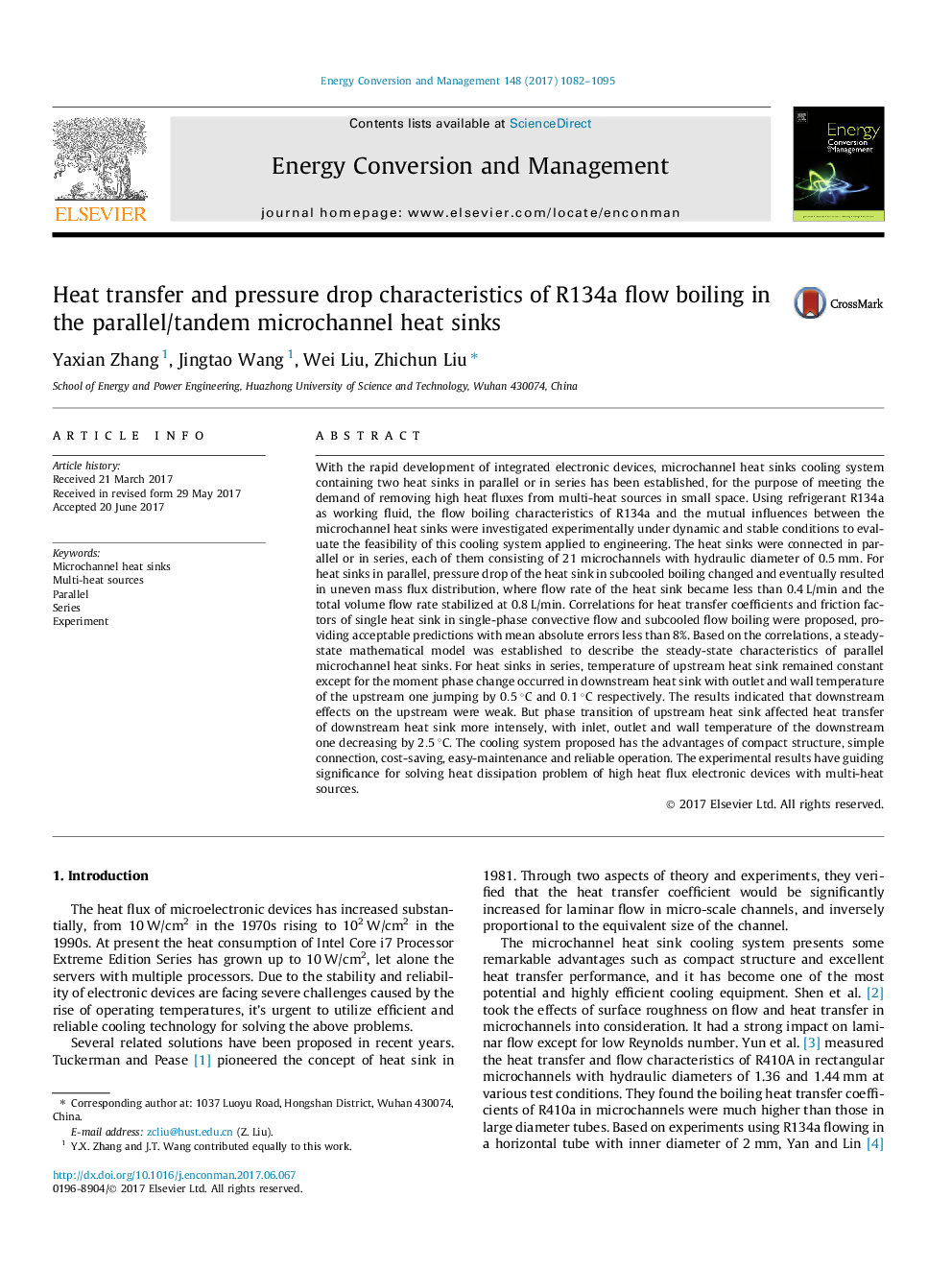| کد مقاله | کد نشریه | سال انتشار | مقاله انگلیسی | نسخه تمام متن |
|---|---|---|---|---|
| 5012601 | 1462814 | 2017 | 14 صفحه PDF | دانلود رایگان |
عنوان انگلیسی مقاله ISI
Heat transfer and pressure drop characteristics of R134a flow boiling in the parallel/tandem microchannel heat sinks
دانلود مقاله + سفارش ترجمه
دانلود مقاله ISI انگلیسی
رایگان برای ایرانیان
کلمات کلیدی
موضوعات مرتبط
مهندسی و علوم پایه
مهندسی انرژی
انرژی (عمومی)
پیش نمایش صفحه اول مقاله

چکیده انگلیسی
With the rapid development of integrated electronic devices, microchannel heat sinks cooling system containing two heat sinks in parallel or in series has been established, for the purpose of meeting the demand of removing high heat fluxes from multi-heat sources in small space. Using refrigerant R134a as working fluid, the flow boiling characteristics of R134a and the mutual influences between the microchannel heat sinks were investigated experimentally under dynamic and stable conditions to evaluate the feasibility of this cooling system applied to engineering. The heat sinks were connected in parallel or in series, each of them consisting of 21 microchannels with hydraulic diameter of 0.5 mm. For heat sinks in parallel, pressure drop of the heat sink in subcooled boiling changed and eventually resulted in uneven mass flux distribution, where flow rate of the heat sink became less than 0.4 L/min and the total volume flow rate stabilized at 0.8 L/min. Correlations for heat transfer coefficients and friction factors of single heat sink in single-phase convective flow and subcooled flow boiling were proposed, providing acceptable predictions with mean absolute errors less than 8%. Based on the correlations, a steady-state mathematical model was established to describe the steady-state characteristics of parallel microchannel heat sinks. For heat sinks in series, temperature of upstream heat sink remained constant except for the moment phase change occurred in downstream heat sink with outlet and wall temperature of the upstream one jumping by 0.5°C and 0.1°C respectively. The results indicated that downstream effects on the upstream were weak. But phase transition of upstream heat sink affected heat transfer of downstream heat sink more intensely, with inlet, outlet and wall temperature of the downstream one decreasing by 2.5°C. The cooling system proposed has the advantages of compact structure, simple connection, cost-saving, easy-maintenance and reliable operation. The experimental results have guiding significance for solving heat dissipation problem of high heat flux electronic devices with multi-heat sources.
ناشر
Database: Elsevier - ScienceDirect (ساینس دایرکت)
Journal: Energy Conversion and Management - Volume 148, 15 September 2017, Pages 1082-1095
Journal: Energy Conversion and Management - Volume 148, 15 September 2017, Pages 1082-1095
نویسندگان
Yaxian Zhang, Jingtao Wang, Wei Liu, Zhichun Liu,